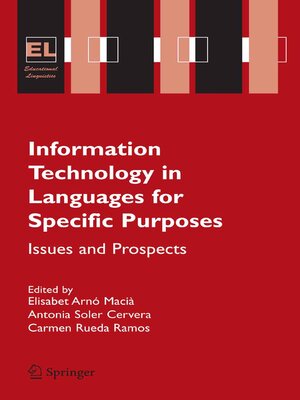Information Technology in Languages for Specific Purposes
ebook ∣ Issues and Prospects · Educational Linguistics
By Elisabet Arnó Macià

Sign up to save your library
With an OverDrive account, you can save your favorite libraries for at-a-glance information about availability. Find out more about OverDrive accounts.
Find this title in Libby, the library reading app by OverDrive.



Search for a digital library with this title
Title found at these libraries:
| Loading... |
I first used the Internet in fall 1993, as a Fulbright Scholar at Charles University in Prague. I immediately recognized that the Internet would radically transform second language teaching and learning, and within a year had written my first book on the topic, E-Mail for English Teaching. The book galvanized a wave of growing interest in the relationship of the Internet to language learning, and was soon followed by many more books on the topic by applied linguists or educators. This volume, though, represents one of the first that specifically analyzes the relationship of new technologies to the teaching of languages for specific purposes (LSP), and, in doing so, makes an important contribution. The overall impact of information and communication technology (ICT) on second language learning can be summarized in two ways, both of which have special significance for teaching LSP. First, ICT has transformed the context of language learning. The stunning growth of the Internet—resulting in 24 trillion email messages sent in 2005, and more than 600 billion Web pages and 50 million blogs online in the same year—has helped make possible the development of English as the world's first global language.






